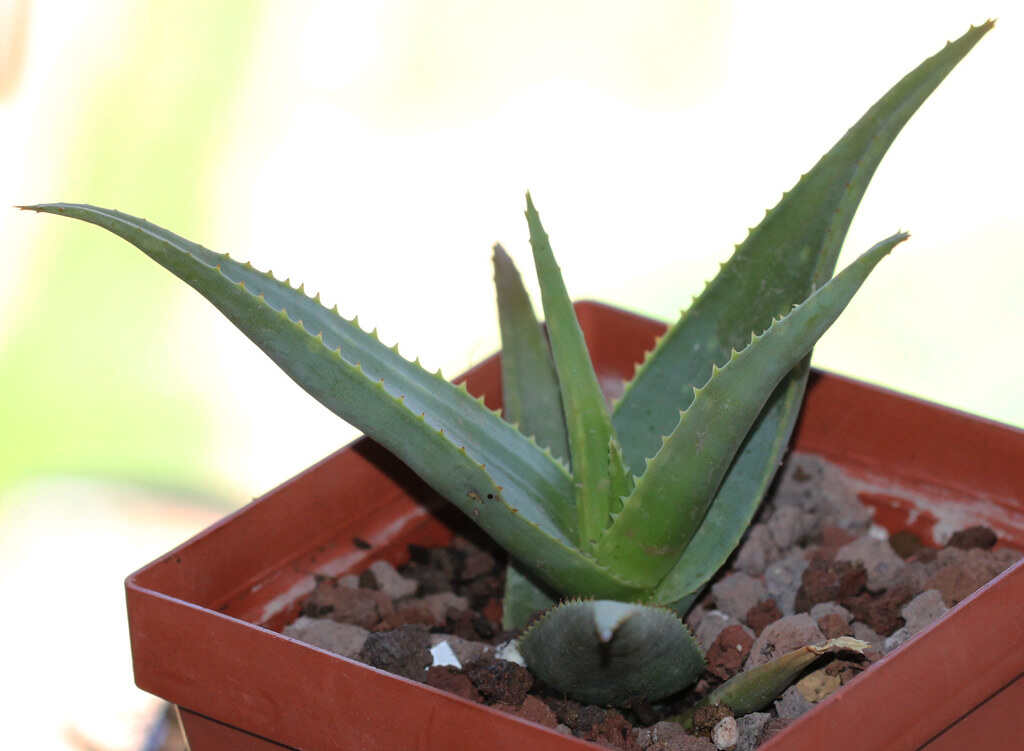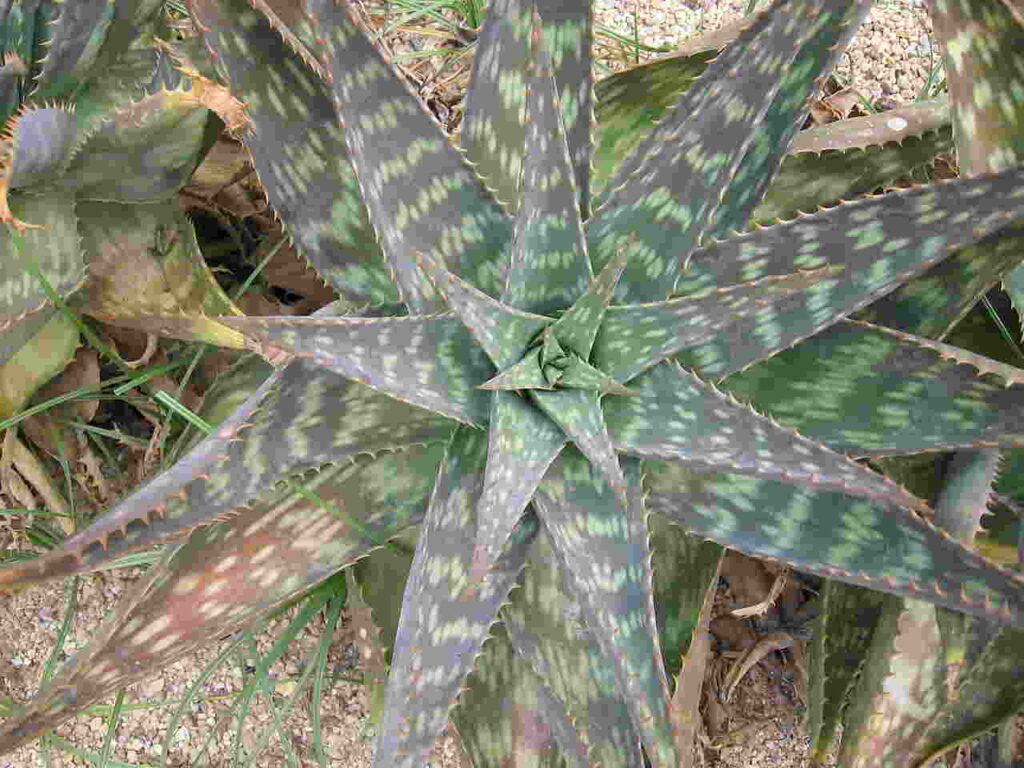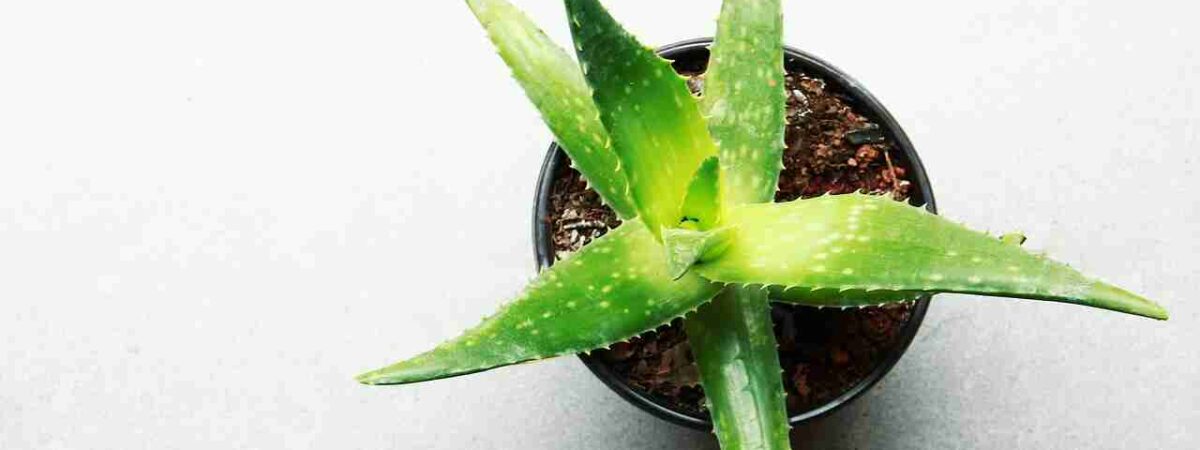Aloe vera is a versatile plant that has been used for the past few centuries for its medicinal and cosmetic properties. So it is no wonder that it has become a very popular plant to have in homes and gardens around the world.
But did you know that there are actually different types of aloe vera plants?
Each type of aloe vera plant has its own unique characteristics and uses. So here in this blog post, we will be exploring the fascinating world of aloe vera plants and introducing you to five of the most popular varieties.
From the rare and exotic to the widely known and well-loved, get ready to discover the wonders of aloe vera like never before. So sit back, relax, and let’s dive into the article below to the world of aloe vera plant varieties!
What is an aloe vera plant?
Aloe vera plant is a popular succulent plant species that is native to the Arabian Peninsula, but these days it is widely cultivated in most of the world. This plant is very famous for its fleshy, green leaves that contain a clear gel-like substance inside, that is popularly used for a variety of medicinal, cosmetic, and culinary purposes.
These plants are relatively easy to care for, and are one of the very popular houseplants due to their hardiness and aesthetic appeal.
The plant has been used for centuries by various cultures for its healing properties, and is still widely used today in various forms, such as in creams, lotions, and supplements.
Uses of aloe vera
Following are some uses of aloe vera:
Skin care
Aloe vera is generally used in skin care products, such as lotions, creams, and face masks, for its hydrating and soothing properties. This can help to calm your irritated skin, reduce inflammation, and promote healing of minor cuts and burns in your body.
Digestive health
Aloe vera juice is often used as a natural remedy for digestive issues, such as constipation and acid reflux. It can help to soothe the digestive tract and promote regular bowel movements.
Wound healing
Aloe vera gel can be applied topically to minor wounds, such as cuts and burns, to promote healing and reduce the risk of infection. It is believed that this plant has antibacterial and anti-inflammatory properties.
Oral health
Aloe vera can be used in mouthwash and toothpaste to promote oral health. Thus, this plant can help to reduce inflammation and soothe gum irritation.
Hair care
Aloe vera is commonly used in hair care products, such as shampoos and conditioners, due to its hydrating properties. It can help to reduce dandruff and promote healthy hair growth.
Immune system support
Aloe vera contains vitamins, minerals, and antioxidants that can help to support a healthy immune system. It is also believed to have anti-inflammatory properties that can help to reduce the risk of chronic diseases.
Sunburn relief
Aloe vera gel can be applied topically to sunburned skin to reduce inflammation and soothe pain. This plant can also help to promote healing of damaged skin.
Types of aloe vera plants
Aloe vera barbadensis miller

Plant Description
Aloe vera barbadensis miller, also known as Aloe barbadensis or Aloe vera, is a succulent plant species that is native to the Arabian Peninsula, but is now widely cultivated in many parts of the world. This species of aloe has long, green, fleshy leaves which usually grow in a rosette pattern and can reach up to 2-3 feet in length. The leaves are serrated and have small white teeth along the edges. The gel present inside the leaves of the plant is very clear and has a slightly bitter taste.
It is a hardy plant that can tolerate a wide range of growing conditions. This aloe variety prefers well-draining soil and full sun to partial shade to grow. This plant can produce long stalks of yellow or orange flowers during the summer, that can attract bees and other pollinators.
Distinguishing features
Aloe vera barbadensis miller and aloe vera are generally the same plant species. However, there are some distinguishing features that include the way they are grown and processed that can affect their properties and quality.
This is often considered to be the most potent variety of this plant due to its high content of active compounds. This plant is usually grown in organic, nutrient-rich soil and processed using minimal heat and chemicals to preserve its natural properties.
On the other hand, it can refer to any of the hundreds of aloe plant varieties, some of which may not have the same beneficial properties as Aloe vera barbadensis miller. Additionally, these products can vary widely in quality and potency depending on the growing and processing methods used.
Popular uses
Aloe vera barbadensis miller is known for its different health and beauty benefits, which makes it a popular ingredient in many products. The gel of this aloe contains a variety of vitamins, minerals, and antioxidants that help to soothe and hydrate the skin, reduce inflammation, and promote wound healing.
It is commonly used in skin care products, such as lotions, creams, and gels, as well as in dietary supplements and health drinks. It is also believed to have digestive benefits, as well as immune system-boosting properties.
It is a versatile plant that can be used in a variety of applications, making it a valuable addition to any natural health or beauty regimen.
Aloe vera chinensis

Plant Description
Aloe vera chinensis, also known as Chinese Aloe or Red Aloe, is a succulent plant species that is native to China. It is a smaller variety of this plant, with shorter leaves that grow in rosettes and can reach up to 12 inches in length.
The leaves are dark green in color with reddish-brown spots and have small white teeth along the edges. The gel inside the leaves of this variety is very clear and has a slightly bitter taste.
Aloe vera chinensis is a major hardy plant that can tolerate a wide range of growing conditions and is often grown for different ornamental purposes due to its unique appearance.
Distinguishing features
Aloe vera chinensis is a smaller and more ornamental variety of Aloe. It has shorter leaves that grow in rosettes and are often tinged with reddish-brown spots, giving the plant a unique appearance.
The gel inside the leaves of this aloe variety is very clear and has a slightly bitter taste, much like the gel of Aloe vera barbadensis miller.
However, Aloe vera chinensis is generally not used for medicinal or cosmetic purposes as it does not contain the same high levels of active compounds as Aloe vera barbadensis miller. Instead, this aloe variety is basically grown as an ornamental plant for its unique appearance and hardiness.
Popular uses
Aloe vera chinensis is primarily grown as an ornamental plant due to its unique appearance and hardiness. The smaller size of the plant and reddish-brown spots on the leaves make it a very popular addition to rock gardens, succulent gardens, and indoor plant displays.
Although Aloe vera chinensis does contain the same gel with potential health benefits as Aloe vera, this plant is generally not used for any kind of medicinal or cosmetic purposes as it does not contain the same high levels of active compounds.
Instead, this aloe variety is enjoyed for its aesthetic qualities and it can add a beautiful touch of color and texture to any garden or indoor space.
Aloe vera perryi

Plant Description
Aloe vera perryi, also known as Perry’s Aloe or Socotrine Aloe, is a succulent plant species that are native to the island of Socotra, off the coast of Yemen. This plant variety is a relatively small variety of original aloe vera, along with rosettes of long, narrow leaves that can grow up to 18 inches in length.
The leaves are a pale green color with white spots and have small teeth along the edges. The gel inside the leaves of the plant is very clear and has a slightly bitter taste. It is a very hardy plant that can tolerate a wide variety of growing conditions and is often grown for its medicinal properties.
Distinguishing features
Aloe vera perryi, is a unique variety of aloe vera that is distinguishable from other varieties by its long, narrow leaves and pale green color with white spots. The leaves can grow up to 18 inches in length, which is longer than most other these plant varieties.
Additionally, the gel inside the leaves of this plant is considered to be of higher quality than that of other species, containing higher levels of active compounds that have medicinal properties.
This variety is primarily grown for its medicinal properties, and is believed to have a wide range of health benefits for the skin, digestion, and immune system.
Popular uses
Aloe vera perryi, is primarily grown for its medicinal properties. The gel inside the leaves of this species is believed to have higher levels of active compounds than other aloe species, making it particularly beneficial for skin care, digestion, and immune support.
The gel of this plant can be used topically to soothe and moisturize the skin, and is often included in natural skin care products. It is also basically used as a dietary supplement, as the active compounds content in Aloe vera perryi gel is believed to have anti-inflammatory, antimicrobial, and antioxidant properties that can easily support overall health and wellness.
Aloe vera saponaria

Plant Description
Aloe vera saponaria, popularly known as soap Aloe or African Aloe, is a succulent plant species that is native to South Africa. It is a medium-sized aloe variety that can grow up to three feet tall, with rosettes of long, narrow leaves that are pale green in color and have small teeth along the edges.
The gel inside the leaves is clear and has a slightly bitter taste, much like other species. Aloe vera saponaria is popular for its high concentration of saponins content, which give the plant its soapy texture when crushed. This plant is often used in different traditional medicine for its cleansing and healing properties.
Distinguishing features
Aloe vera saponaria is distinguishable from other aloe varieties by its soapy texture when the leaves are crushed. The texture of this aloe vera is due to the high concentration of saponins in the plant, which makes it useful for cleaning and traditional medicine purposes.
The leaves of these plants are also longer and thinner than some other aloe vera varieties, with a more upright growth habit.
The gel inside the leaves has a slightly bitter taste, much like other aloe species, and is believed to have similar health benefits, including soothing and moisturizing the skin and supporting digestion.
Popular uses
Aloe vera saponaria is a popular aloe variety that has been traditionally used for its cleansing and healing properties. The high concentration of saponins in this plant makes it an effective natural cleanser for the skin, hair, and even household surfaces.
It can also be used in traditional medicine to support digestion and relieve skin irritations. Additionally, its gel has been shown to have antimicrobial and anti-inflammatory properties, which can help to fight off infections and reduce inflammation in the body.
This plant is also believed to have some antioxidant properties that may provide further health benefits.
Aloe vera variegata

Plant Description
Aloe vera variegata, also commonly known as the Partridge Breast Aloe, is a slow-growing, medium-sized succulent aloe variety that is native to Madagascar. This aloe variety is easily distinguishable from others due to its distinctive white markings, which run lengthwise along the edges of its leaves, giving it a striped appearance.
The leaves themselves are thick and fleshy, growing in a rosette formation and ranging in color from green to bluish-green, with some pink or red tones depending on the plant’s growing conditions.
Aloe vera variegata generally produces small, tubular, orange-to-red flowers on a tall stem during the months of summer. It is sometimes grown as an ornamental plant for its unique appearance.
Distinguishing features
Aloe vera variegata can be distinguished from other aloe varieties for its distinctive white markings along the edges of its leaves, which gives it a striped appearance.
Unlike other aloe species, the color of the leaves can range from green to bluish-green, with some pink or red tones depending on the plant’s growing conditions.
The leaves of these plants are thick and fleshy, growing in a rosette formation, and can reach up to 30 cm in length. This plant generally produces small, tubular, orange to red flowers on a tall stem of the aloe throughout the summer months, which adds a unique appearance to it. This aloe variety is often grown as an ornamental plant due to its unusual markings and coloration.
Popular uses
Aloe vera variegata is a popular aloe variety that has been traditionally used for its medicinal properties. The gel inside the leaves of this aloe variety is rich in nutrients, that includes vitamins, minerals, and amino acids, and it has been shown to have anti-inflammatory and antimicrobial properties.
These plants can be used topically to soothe and moisturize your skin, along with alleviating minor burns, cuts, and insect bites. Apart from that, the juice of the leaves can be consumed easily to support your digestion process and boost the immune system.
This plant is also grown as an ornamental plant popular for its unique appearance and is a popular choice for rock gardens, succulent gardens, and indoor plant displays.
Conclusion
Aloe vera is one of the versatile plant species that can offer a range of benefits for human health and well-being. While all of these aloe vera plants share some common characteristics, like their thick and fleshy leaves, they can also display unique features that make them distinguishable from each other.
As we learned about the different types of aloe vera plants, you can have a better understanding of their specific properties and potential uses. From the well-known Aloe vera barbadensis miller to the lesser-popular Aloe vera variegata, each of these varieties can offer its own distinct benefits.
No matter if the aloe variety has been used topically or internally, these plants have a lot to provide, making them a valuable addition to any home or garden.
You may also like to read
Discover the Top Plant Nutrients You Need for Thriving Plants






